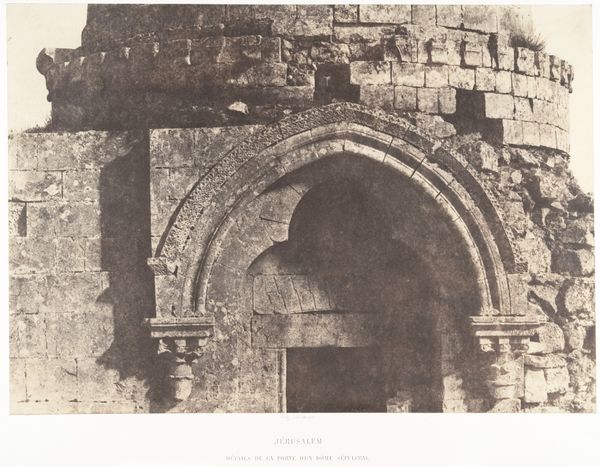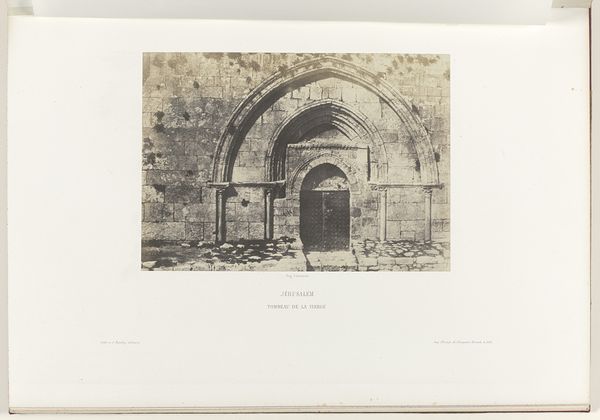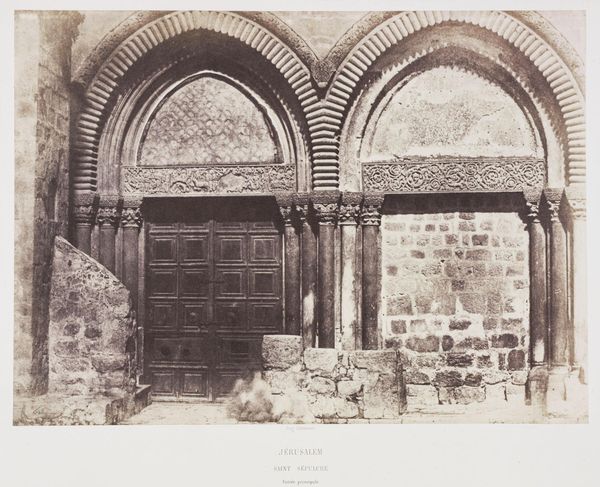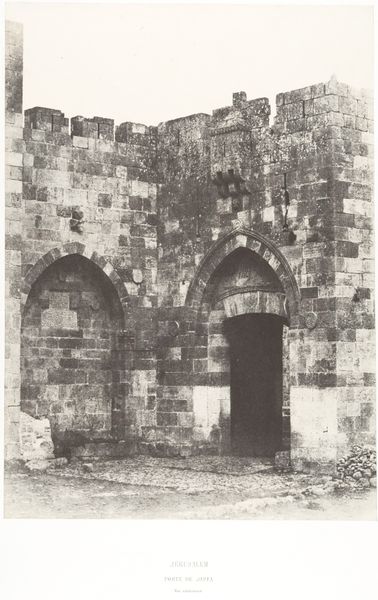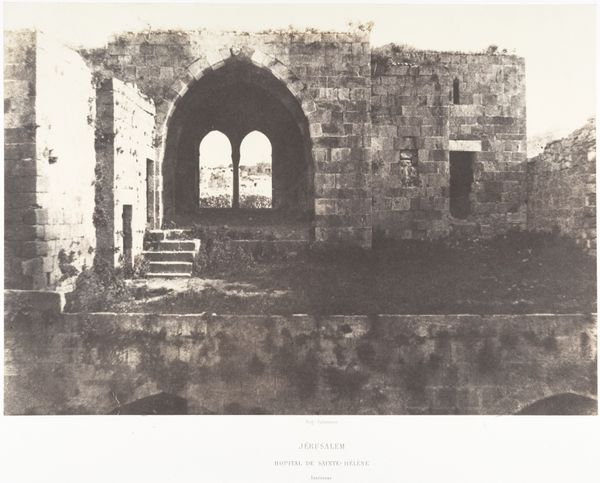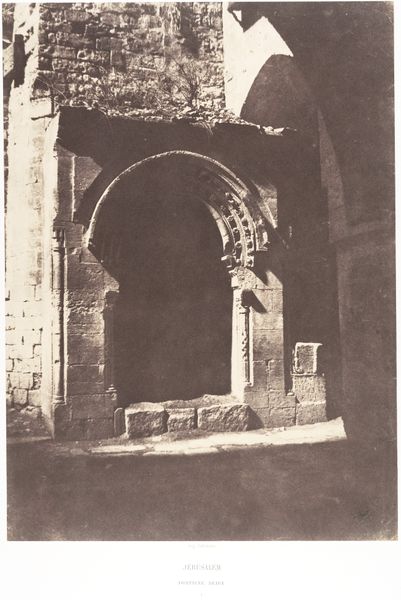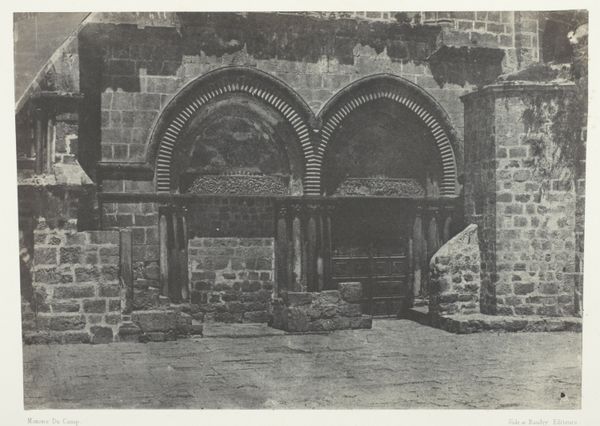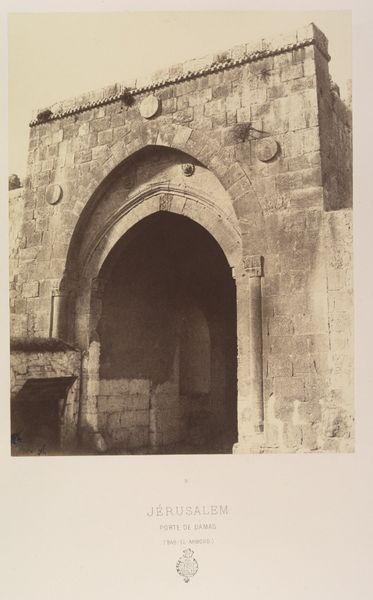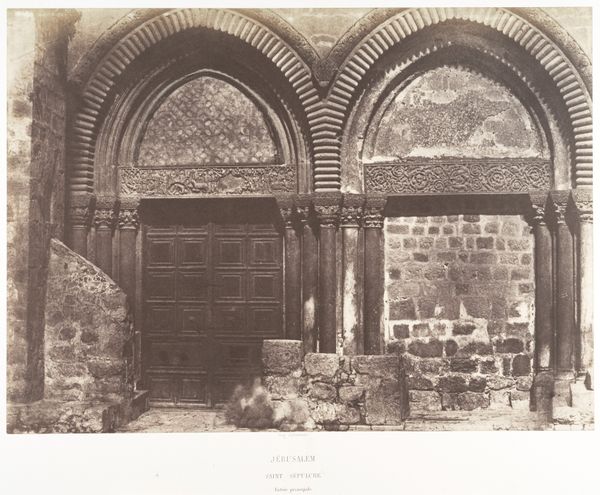
daguerreotype, photography, architecture
#
daguerreotype
#
photography
#
orientalism
#
history-painting
#
architecture
Dimensions: Image: 23.5 x 33 cm (9 1/4 x 13 in.) Mount: 44.6 x 60.1 cm (17 9/16 x 23 11/16 in.)
Copyright: Public Domain
Auguste Salzmann made this photograph of the Tomb of the Virgin in Jerusalem using a waxed paper negative. The collotype printing process used here allowed for a high level of detail, capturing the rough texture of the ancient stone and the play of light and shadow across its surface. This photograph was produced in the mid-19th century, a period of intense European interest in the Middle East, often framed by religious and colonial ambitions. Salzmann's work was commissioned as part of a French archaeological mission. Consider the institutional context: the photograph, like archeology itself, was both a tool for documentation and a form of appropriation, influencing Western perceptions and control of the region. Salzmann's photographs were intended to be scientific and objective, but they inevitably reflect the cultural biases of his time, eliding any consideration of its contemporary social context and reframing the site for a western audience. To understand this image fully, one might consult archives of archaeological expeditions, colonial records, and contemporary writings about the Middle East. The role of the historian is to uncover these layers of meaning, revealing the complex social and institutional forces that shape not only the creation of art, but its interpretation as well.
Comments
No comments
Be the first to comment and join the conversation on the ultimate creative platform.
